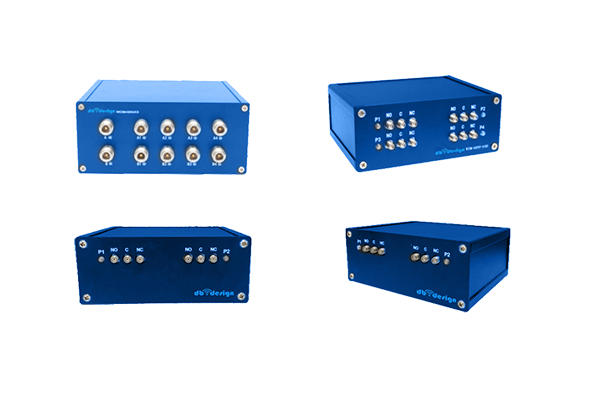
Pin diode devices are now regarded as essential parts in high-frequency circuitry given their inherent performance characteristics Their quick conductive to nonconductive switching and compact capacitance with limited insertion loss make them perfect for switches modulators and attenuators. The primary process that governs PIN diode switching is the modulation of current by varying the applied bias. The bias voltage changes the junction depletion width which in turn influences the device conductance. Controlling the bias point makes it possible for PIN diodes to switch at microwave frequencies with low distortion
For applications demanding exact timing and control PIN diodes are typically incorporated into complex circuitry They can function inside RF filters to permit or attenuate targeted frequency bands. Additionally their ability to handle elevated power levels makes them fit for amplifier power divider and generator circuits. Miniaturized high-efficiency PIN diodes now find more applications in wireless and radar technologies
Coaxial Switch Architecture and Performance Review
Designing coaxial switches involves a delicate process that must account for many interrelated parameters Performance depends on which switch style is used the operational frequency and insertion loss performance. Coaxial switch optimization emphasizes low insertion loss combined with high interport isolation
Assessment of switch performance typically measures metrics including return loss insertion loss and isolation. These values come from combined use of simulations theoretical predictions and experimental validation. Detailed and accurate analysis underpins reliable functioning of coaxial switches in various systems
- Analytical methods simulation packages and experimental testing are standard approaches to coaxial switch analysis
- Environmental temperature impedance mismatches and production tolerances can significantly influence switch characteristics
- Emerging developments and novel techniques in switch design concentrate on boosting performance while minimizing footprint and energy use
Design Strategies for Low Noise Amplifiers
Optimization of LNA gain efficiency and overall performance is critical to achieve excellent signal preservation This requires careful selection of transistors bias conditions and circuit topology. Good LNA design practices focus on lowering noise and achieving high amplification with minimal distortion. Design evaluation relies heavily on simulation and modeling tools to measure noise effects of various choices. The objective is achieving a low Noise Figure which measures the amplifier’s ability to preserve signal strength while suppressing internal noise
- Opting for transistors with small inherent noise is a vital design decision
- Optimal proper and suitable bias conditions are necessary to limit noise generation in transistors
- Circuit layout and topology have substantial impact on noise characteristics
Employing matching networks noise suppression and feedback systems refines LNA performance
Pin Diode Switch Based Signal Routing

Pin diode switch implementations yield flexible efficient routing of RF signals in diverse applications Rapid switching capability of these semiconductors supports dynamic path selection and control. Strong isolation and low insertion loss in PIN diodes contribute to reduced signal degradation. They are applied in antenna selection circuits duplexers and phased array antenna systems
The applied control voltage modulates resistance to toggle the diode between blocking and passing states. As deactivated the diode provides high resistance, impeding RF signal transmission. With forward bias the diode’s resistance diminishes permitting the RF signal to flow
- Additionally moreover furthermore PIN diode switches offer rapid switching low power consumption and compact size
Multiple architectures designs and configurations of PIN diode switch networks can be constructed to deliver advanced routing functions. Arranging multiple switches in networked matrices enables flexible routing and dynamic configuration
Coaxial Microwave Switch Performance Evaluation

Detailed assessment and testing validate coaxial microwave switches for optimal function across electronic systems. A range of factors like insertion reflection transmission loss isolation switching rate and bandwidth affect switch performance. A full evaluation process measures these characteristics under various operating environmental and test conditions
- Additionally furthermore moreover the assessment must address reliability robustness durability and tolerance to severe environments
- Ultimately comprehensive evaluation outputs provide critical valuable and essential guidance for switch selection design and optimization for targeted uses
Comprehensive Review on Reducing Noise in LNA Circuits
Low noise amplifier circuits are essential components in many wireless radio frequency and RF communication systems because they amplify weak signals while limiting added noise. This review gives a broad examination analysis and overview of methods to lower noise in LNAs. We investigate explore and discuss chief noise sources including thermal shot and flicker noise. We examine noise matching feedback loop designs and bias optimization techniques for noise mitigation. It showcases recent advancements such as emerging semiconductor materials and creative circuit concepts that reduce noise figures. Providing comprehensive insight into noise management principles and approaches the article benefits researchers and engineers in RF system development
Applications of Pin Diodes in High Speed Switching Systems

PIN diodes possess remarkable unique and exceptional traits that fit them well for high speed switching systems Reduced capacitance and low resistance yield fast switching performance suitable for strict timing control. Their proportional voltage response enables controlled amplitude modulation and reliable switching behavior. Their adaptability flexibility and versatility qualifies them as suitable applicable and appropriate for broad high speed uses They are applied in optical communications microwave systems and signal processing equipment and devices
Integrated Coaxial Switch and Circuit Switching Solutions
Integrated circuit coaxial switching technology brings enhanced capabilities for signal routing processing and handling within electronics systems circuits and devices. These specialized integrated circuits enable control management and routing of coaxial signals with high frequency performance and low latency insertion times. Miniaturized IC implementations provide compact efficient reliable and robust designs enabling dense interfacing integration and connectivity
- By carefully meticulously and rigorously applying these approaches designers can realize LNAs with outstanding noise performance enabling sensitive reliable electronic systems With careful meticulous and rigorous deployment of these approaches developers can accomplish LNAs with outstanding noise performance enabling trustworthy sensitive electronics Through careful meticulous and rigorous application of such methods engineers can design pin diode switch LNAs with top tier noise performance enabling dependable sensitive systems With careful meticulous and rigorous execution of these strategies designers can obtain LNAs exhibiting excellent noise performance for sensitive reliable systems
- IC coaxial switch uses include telecommunications data communications and wireless network systems
- Aerospace defense and industrial automation benefit from integrated coaxial switch solutions
- Consumer electronics A V devices and test measurement apparatus make use of IC coaxial switch technologies
mmWave LNA Engineering Considerations

At mmWave frequencies LNAs must contend with greater signal attenuation and intensified influence from noise sources. Parasitic elements such as capacitance and inductance dominate performance at mmWave so layout and component selection are critical. Controlling input match and achieving high power gain are critical essential and important requirements in mmWave LNA design. Choosing appropriate active devices like HEMTs GaAs MESFETs or InP HBTs is key to achieving low noise at mmWave bands. Further the design implementation and optimization of matching networks remains vital to achieve efficient power transfer and proper impedance matching. Consideration of package parasitics is required because they may adversely impact LNA performance at mmWave. Selecting low-loss transmission paths and optimal ground plane layouts is essential necessary and important for reducing reflection and preserving bandwidth
PIN Diode RF Switching Characterization and Modeling
PIN diodes exist as key components elements and parts in several RF switching applications. Thorough precise and accurate characterization of these devices is essential for designing developing and optimizing reliable high performance circuits. Part of the process is analyzing evaluating and examining their electrical voltage current characteristics like resistance impedance and conductance. Also characterized are frequency response bandwidth tuning capabilities and switching speed latency response time
Additionally the development of accurate models simulations and representations for PIN diodes is vital essential and crucial for predicting their behavior in RF systems. A range of modeling approaches including lumped element distributed element and SPICE models are used. Choosing the proper model relies on the specific application requirements and the desired required expected accuracy
State of the Art Techniques for Low Noise Amplifier Design
Designing low noise amplifiers necessitates detailed attention to topology and component choice to reach best noise figures. Recent semiconductor innovations and emerging technologies facilitate innovative groundbreaking sophisticated design methods that reduce noise significantly.
These techniques often involve employing utilizing and implementing wideband matching networks adopting low-noise high intrinsic gain transistors and optimizing biasing schemes strategies or approaches. Further advanced packaging approaches together with thermal management methods play a vital role in minimizing external noise contributions. Through careful meticulous and rigorous implementation of these approaches engineers can achieve LNAs with exceptional noise performance supporting sensitive reliable systems
